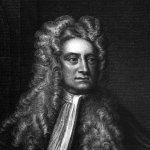Background
Benjamin Martin was born in 1704 in Worplesdon, Surrey, United Kingdom. He was the son of John Martin, gentleman, of Broadstreet, near Worplesdon.

educator lexicographer linguist philosopher
Benjamin Martin was born in 1704 in Worplesdon, Surrey, United Kingdom. He was the son of John Martin, gentleman, of Broadstreet, near Worplesdon.
Nothing is known of Benjamin Martin's education, but it seems probable that in science he was self-taught.
Soon after his marriage, Martin became a teacher, running his own boarding school at Chichester, where, in 1735, he published his first work, The Philosophical Grammar; it ran to eight editions. The second edition includes a description of a pocket microscope, suggesting that Martin was also engaged in inventing and possibly selling optical instruments. By 1743, he had become a traveling lecturer in experimental philosophy, for in that year he first published a textbook based on his course of lectures. Martin made a curiously inept attempt during this period to secure election to the Royal Society. In letters written in 1741 to Sir Hans Sloane and the duke of Richmond, he claimed that he found it an embarrassment when lecturing not to be a fellow, and therefore requested their support in acquiring the title. This approach found no favor at all, and Martin never achieved the desired fellowship.
By 1755 Martin had settled in London, for in January he launched a monthly journal, The General Magazine of Arts and Sciences, the publication of which continued until 1765. Between September 1755 and May 1756, he set up in business at 171 Fleet Street. His shop soon became well-known for its extensive stock and for Martin’s popular lecture-demonstrations, following in the tradition of the Hauksbees and Desaguliers. Martin also stimulated business by his constant publication of catalogues of the scientific instruments that he supplied and pamphlets on a wide range of scientific subjects.
Although Martin claimed to have invented and improved numerous instruments, he is more accurately to be described as a retailer than as an instrument-maker. Instruments bearing his name are to be found in many museums, and they cover a wide range of types. Among his inventions, the best known relates to the microscope. He is credited as the first to supply, in about 1740, a microscope fitted with a micrometer. To improve the image, he produced, from 1759, an objective with two lenses set one inch apart. It has been suggested that the screw thread on this type of objective has a linear descendant in the standard thread of the Royal Microscopical Society, which was established in 1858 and continues in use today.
Yet Martin’s industry and popularity did not bring financial stability. He was declared a bankrupt in January 1782 and died, a few weeks after a suicide attempt, on 9 February.
Martin's spare time was spent in the study of mathematics and astronomy, and he became an ardent champion of the Newtonian system.
In 1729 Benjamin Martin married Mary Lover of Chichester, and at the time of his marriage was described as a merchant of Guildford. The couple had two children, a daughter, Maria, and a son, Joshua Lover Martin, who joined his father in the 1770s to form the firm of B. Martin and Son.

